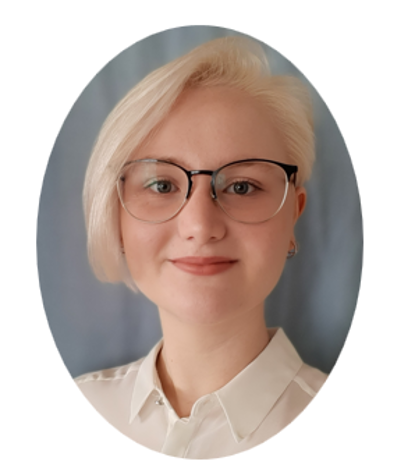Team
| Name | Contact | |
|---|---|---|

| Prof. Dr. rer. nat. habil. Ulrich Maas | ulrich.maas@kit.edu +49 721 608-43930 |

| Vanessa Stegmayer M.Sc. | vanessa.stegmayer@kit.edu +49 721 608-48747 |
Motivation
The trend towards downsizing e.g. in internal combustion engines leads to questions of heat loss and surface reactions of reacting flows near boundaries. Therefore, flame-wall-interactions (FWI) are in the focus of today’s research. Besides experimental investigations, computations of FWI are performed to study and to improve the combustion processes in these configurations. For the modeling of the chemical kinetics for the computation of combustion processes, reaction mechanisms with hundreds of species are developed. Therefore, and due to the use of the Arrhenius law, even today with modern computational facilities, the detailed simulation of complex combustion processes is very time-consuming due to the high dimension and stiffness of these systems. In order to run simulations in a reasonable CPU time, reduced kinetic models are needed and have been developed recently. The Reaction-Diffusion-Manifold (REDIM), which accounts for both chemical kinetics as well as for diffusion processes, performs a model reduction in a very generic way and is applied and developed in this subproject.
Objectives
The main objective of this subproject is the generation of reduced kinetic models for flames close to walls with the use of flame retardants and especially for the subprojects C03 and C07 where the generated reduced kinetic models are used. These reduced kinetic models allow time-efficient but nevertheless accurate multi-dimensional computations of complex applications like IC engines or Side-Wall Quenching burners. The reduced kinetic model is extended and further improved in order to investigate near-wall combustion on porous walls, turbulent combustion processes and heterogeneous reactions on the polymer surface of flame retardants in gaseous, liquid and solid phase. This influences the complexity of the reduced model and the dynamics of boundary layer flames enormously; hence suitable boundary conditions need to be developed and implemented.
Previous Findings
In the first funding period, a reduced kinetic model for flame-wall-interactions was generated. It has been developed, implemented and demonstrated for the methane-air combustion system. Moreover, the reduced kinetic model accounts not only for the heat loss at the wall but also for heterogeneous wall reactions. An invariant manifold contains all states that are accessed during the combustion process of a certain model system. In the first funding period, a method that allows the reduced kinetic model to expand was developed, which means, that the initial mesh of a manifold does not need to contain all these states because the manifold can enlarge. Moreover, it was shown, that the use of a reduced model equation in physical variables with a constant parametrization matrix can lead to errors during the computation.
As in the first funding period, the focus of the second funding period was on the creation of reduced kinetic models that are as accurate as possible for an efficient description of near-wall combustion processes. The work program again included the definition of model fuels and detailed reaction mechanisms. Further work packages are the investigation and integration of the influence of multidimensional gradients, which was successfully completed and demonstrated as well as the investigation and inclusion of pollutant formation and pressure action as well as the treatment of mixture inhomogeneities, which were successfully completed. By extending the REDIM method for flame-wall interactions with mixture inhomogeneities, the dimension of REDIM is increased, which increases the complexity of the system enormously. By fitting the gradients, the REDIM development equation could then be solved. The mixture inhomogeneity was determined by varying equivalence ratios in the initial profile of the calculations in all calculations performed. The stratification is evident from the varying proportion of methane in the unburned gas, to the left of the flame front. Lastly the REDIM concept was extended for hierarchical manifold generation for near-wall combustion processes and the implementation concepts for CFD/LES (Computational Fluid Dynamics/Large Eddy Simulation) were extended in the overall simulation.
Approach
As in the first and second funding periods, the REDIM method is intended to provide the basis for the reduction of chemical kinetics and diffusion processes. The aim is to create reduced models with as little prior knowledge as possible, and also in the first and second funding periods work was done on the hierarchical creation of the reduced model.
Since the combustion system changes significantly due to the addition of flame retardants, it must be clarified to what extent the relevant time scales of the systems change. It is necessary to examine which chemical substances and physical processes, and to what extent multidimensional spatial gradients are affected by the
Addition of the flame retardant will affect the reduced model. This can be done by appropriate timescale analysis as well as an investigation in state space.
A major challenge will be the integration of the heterogeneous reactions of the solid or liquid flame retardant into the REDIM equation. In addition, the REDIM equation is to be extended, so that the heterogeneous reactions caused by flame retardants can be treated from the liquid or solid. This involvement is made possible by the development of appropriate boundary conditions.
Due to the addition of flame retardants and the resulting inhomogeneous combustion systems, it can be assumed that the systems investigated in C07, even in the turbulent regime, can only be reproduced with satisfactory accuracy by higher-dimensional reduced kinetic models. Compared to the first and second funding periods, the complexity of the reduced model to be created increases enormously.
Current Work
Current objectives include the definition of model fuels and reaction mechanisms for flame retardants, which is a recurring process. Furthermore, the investigation and implementation of multi-dimensional gradient estimates and the implementation of reduced kinetic models for inhomogeneous influx are part of the ongoing work. Moreover, pollutant formation is considered within the reduced kinetic model because during the flame extinction close to walls pollutant formation can occur, depending on the air-fuel ratio and the model system.
Cooperations
The main goal of this subproject is the generation of reduced kinetic models for the simplified treatment of the chemical reaction and molecular transport. Therefore, the REDIM method is extended and a continuously exchange and close cooperation with B07 takes place. The developed and constructed reduced kinetic models are made available to C03 for LES computations. Furthermore, the determination and refinement of the reaction mechanisms will be performed in collaboration with B04.




